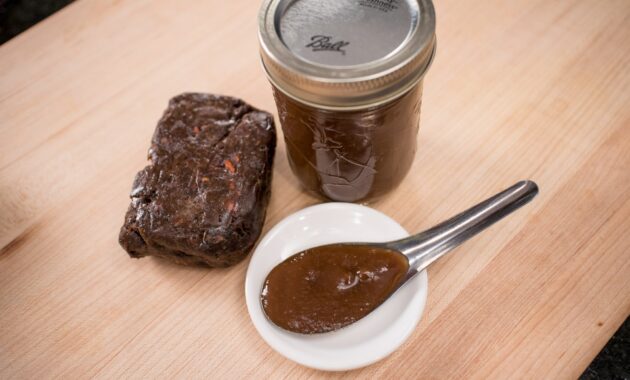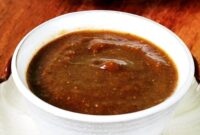Tamarind paste, with its uniquely sweet and sour flavor, is a cornerstone ingredient in cuisines across the globe, particularly in Southeast Asia, India, and Latin America. From savory curries and tangy stir-fries to refreshing beverages and delectable desserts, tamarind paste adds a depth and complexity that’s hard to replicate. While commercially available tamarind paste is readily accessible, nothing beats the vibrant taste and aroma of homemade tamarind paste. This guide will walk you through creating your own tamarind paste from scratch, ensuring a fresher, more flavorful ingredient for all your culinary adventures. Forget the store-bought stuff, making your own Tamarind Paste is surprisingly easy and unlocks a whole new level of flavor in your favorite dishes.
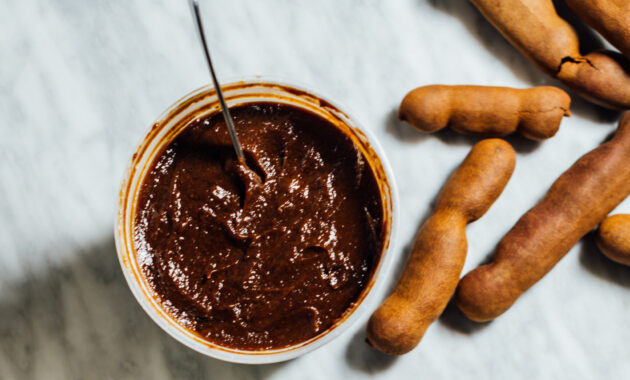
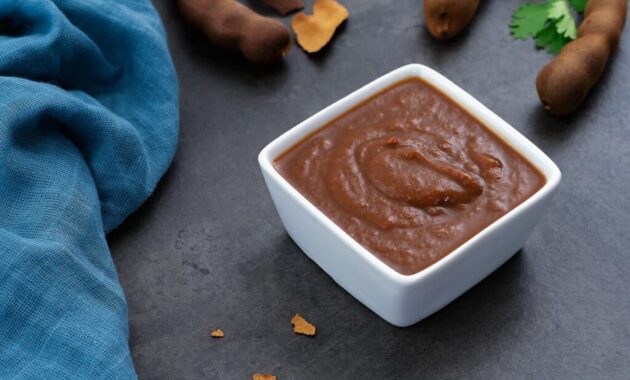
In this comprehensive guide, we’ll cover everything you need to know to make perfect tamarind paste every time. We’ll delve into the different types of tamarind, how to select the best tamarind pods, and provide detailed, easy-to-follow instructions. Whether you’re a seasoned cook or a kitchen novice, this recipe will empower you to create a delicious and versatile ingredient that will elevate your cooking to new heights. Let’s embark on this culinary journey and discover the tangy magic of homemade Tamarind Paste!
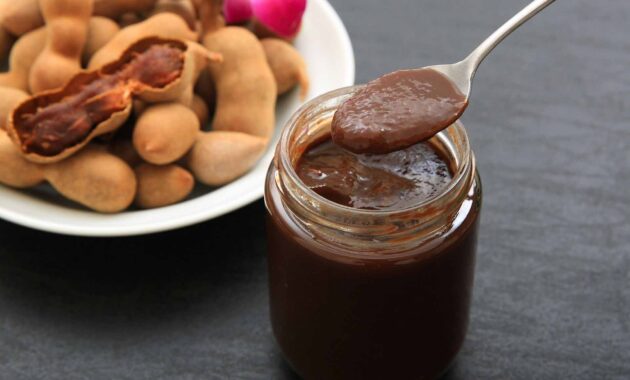
| Category | Value |
|---|---|
| Preparation Time | 15 minutes |
| Cooking Time | 30 minutes |
| Yield | Approximately 1 cup of paste |
| Difficulty | Easy |
Nutritional Information (per tablespoon, approximate)
Please note that the nutritional information provided is an estimate and can vary depending on the specific ingredients used and the preparation method. This information is intended as a general guide only.
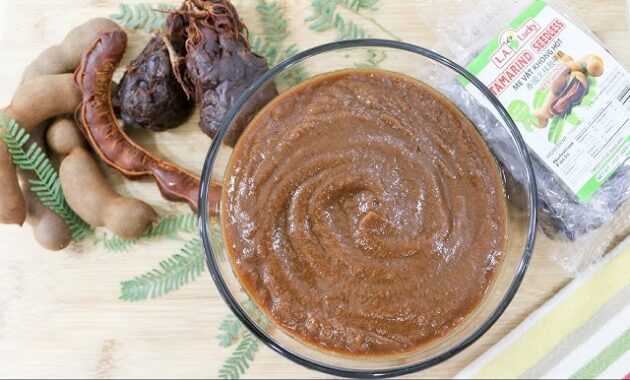
- Calories: Approximately 20-25 kcal
- Carbohydrates: 5-6 grams
- Fiber: 1-2 grams
- Sugar: 3-4 grams
- Protein: Less than 1 gram
- Fat: Less than 1 gram
- Sodium: Trace amounts (can vary depending on the water used)
Ingredients
| Ingredient | Quantity | Notes |
|---|---|---|
| Tamarind Pods | 1 pound (approx. 450g) | Choose pods that are plump and have a dark brown color. Avoid those that are too dry or cracked. |
| Water | 4 cups (approx. 950ml) | Filtered water is preferred for the best flavor. |
Cooking Instructions
- Prepare the Tamarind Pods: Begin by cracking open the tamarind pods. Remove the brittle outer shell to expose the sticky pulp inside. Don’t worry about removing the seeds and fibers just yet; we’ll take care of that later.
- Soak the Tamarind Pulp: Place the tamarind pulp (with seeds and fibers) in a medium-sized saucepan. Pour the water over the pulp, ensuring it’s fully submerged.
- Simmer the Mixture: Bring the mixture to a gentle simmer over medium heat. Once simmering, reduce the heat to low and let it cook for about 20-30 minutes. The tamarind pulp should become very soft and the water will turn a rich, dark brown color. This process extracts the maximum flavor from the tamarind.
- Cool Slightly: Remove the saucepan from the heat and let the mixture cool down slightly. This will make it easier to handle in the next step.
- Strain and Separate: Using a fine-mesh sieve or a cheesecloth-lined colander, strain the tamarind mixture into a bowl. This will separate the pulp from the seeds and fibers.
- Extract the Paste: Use a spoon or your hands (make sure they are clean!) to press the tamarind pulp against the sieve, extracting as much of the paste as possible. The goal is to leave behind only the seeds and fibers. You may need to add a little extra water to help loosen the pulp and facilitate the straining process.
- Adjust Consistency (Optional): If you prefer a thicker Tamarind Paste, return the strained paste to the saucepan and simmer it over low heat for a few more minutes, stirring constantly, until it reaches your desired consistency. This step is optional and depends on your personal preference. For a thinner paste, add a little water.
- Cool and Store: Let the Tamarind Paste cool completely before transferring it to an airtight container. Store it in the refrigerator for up to 2-3 weeks. You can also freeze it in ice cube trays for longer storage; simply pop out the frozen cubes as needed for your recipes. Properly stored, the homemade Tamarind Paste will maintain its flavor and quality for an extended period.
Serving Suggestions
Homemade Tamarind Paste is incredibly versatile and can be used in a wide range of dishes. Here are just a few ideas to get you started:
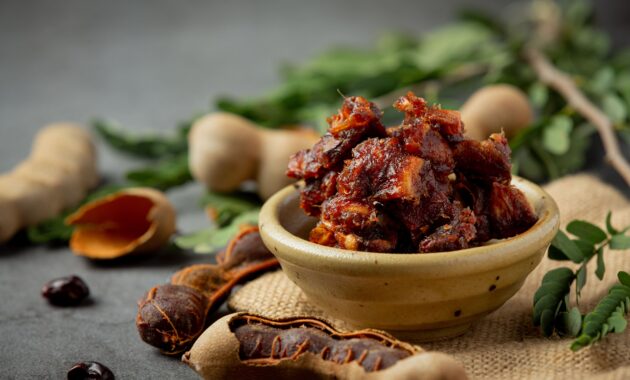
- Pad Thai: A classic Thai noodle dish that relies on Tamarind Paste for its signature tangy flavor.
- Curries: Add a spoonful of Tamarind Paste to curries for a delightful sweet and sour note. It works particularly well in South Indian and Southeast Asian curries.
- Chutneys and Sauces: Tamarind Paste is a key ingredient in many chutneys and sauces, adding depth and complexity.
- Marinades: Use Tamarind Paste in marinades for meats and vegetables to tenderize and add flavor.
- Soups: A touch of Tamarind Paste can brighten up soups and stews, adding a unique tang.
- Drinks: Tamarind juice is a popular beverage in many cultures, known for its refreshing and slightly tart taste.
- Desserts: Believe it or not, Tamarind Paste can also be used in desserts! It adds a unique twist to sweets like cakes, candies, and ice cream.
Tips and Notes
- Choosing Tamarind Pods: Look for tamarind pods that are plump, heavy for their size, and have a dark brown color. Avoid pods that are dry, cracked, or have visible mold.
- Tamarind Concentrate vs. Tamarind Paste: Tamarind concentrate is a more concentrated and intensely flavored version of Tamarind Paste. If using concentrate, use it sparingly and dilute it with water to achieve the desired flavor.
- Adjusting the Sweetness: Depending on the ripeness of the tamarind pods, the paste may be more or less sour. You can adjust the sweetness by adding a touch of sugar or honey to the paste.
- Straining Thoroughly: Make sure to strain the tamarind mixture thoroughly to remove all the seeds and fibers. This will ensure a smooth and creamy paste.
- Storage is Key: Store your homemade Tamarind Paste in an airtight container in the refrigerator to maintain its freshness and flavor. Freezing is also an excellent option for longer storage.
- Experiment! Don’t be afraid to experiment with Tamarind Paste in your cooking. Its unique flavor profile can add a surprising and delicious twist to many dishes.
- Tamarind and Your Health: Tamarind is known to be rich in antioxidants, vitamins, and minerals. It’s often used in traditional medicine for its digestive and anti-inflammatory properties.
Making your own Tamarind Paste is a rewarding culinary experience that allows you to control the quality and flavor of this essential ingredient. With this detailed guide and a little practice, you’ll be creating delicious Tamarind Paste in no time, adding a tangy twist to all your favorite dishes. Enjoy the journey and happy cooking! Now that you know how to make your own Tamarind Paste, you’ll never go back to the store-bought version. The flavor is simply unmatched. The best part about making your own Tamarind Paste is that you know exactly what’s going into it. No preservatives, no additives, just pure, unadulterated tamarind flavor. Many dishes benefit from a touch of Tamarind Paste, adding a layer of complexity that’s hard to achieve otherwise. So, embrace the tangy magic and start making your own Tamarind Paste today!
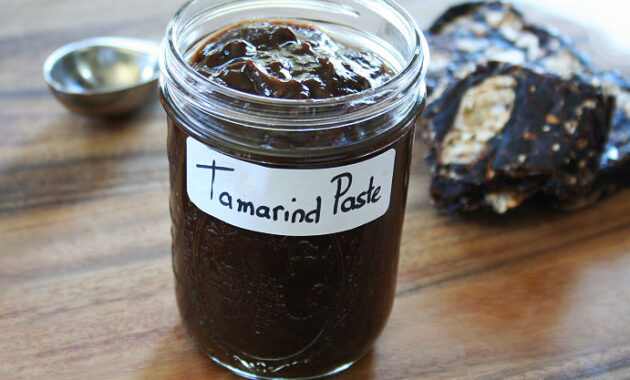
If you are a fan of Southeast Asian cooking or are simply looking to add a new dimension to your culinary creations, mastering the art of making Tamarind Paste is a must. This humble ingredient has the power to transform ordinary dishes into extraordinary culinary experiences. So, gather your tamarind pods, follow our step-by-step instructions, and get ready to unlock the tangy magic of homemade Tamarind Paste!
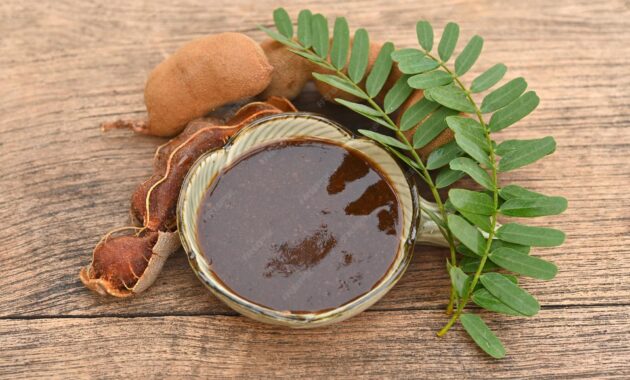
The journey to perfect Tamarind Paste starts with selecting the right tamarind pods. Look for pods that are plump, dark brown, and heavy for their size. These pods will yield the most flavorful and concentrated paste. Once you’ve got your hands on some high-quality tamarind pods, the rest is easy. Simply soak, simmer, strain, and store – it’s a recipe that even the most novice cook can master. And the best part? You’ll have a supply of fresh, homemade Tamarind Paste ready to elevate your cooking whenever you need it. So, what are you waiting for? Get in the kitchen and start making some Tamarind Paste today! Your taste buds will thank you.
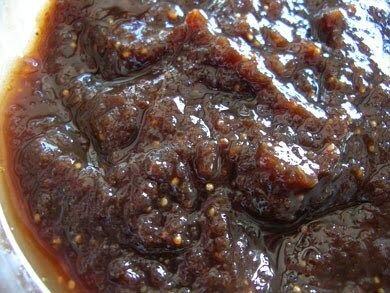
Remember, the key to great Tamarind Paste is patience and attention to detail. Take your time with each step, and don’t be afraid to experiment with different ratios of water and tamarind to find the perfect consistency and flavor for your liking. With a little practice, you’ll become a Tamarind Paste pro in no time! And once you’ve mastered the art of making Tamarind Paste, the possibilities are endless. From classic Thai dishes to innovative culinary creations, this versatile ingredient will add a unique and unforgettable touch to everything you make.
